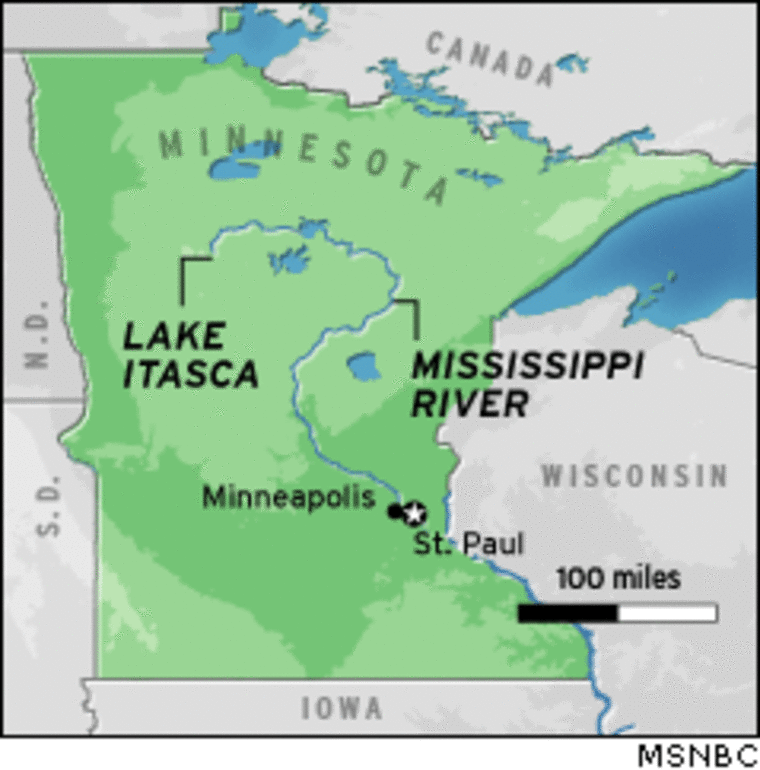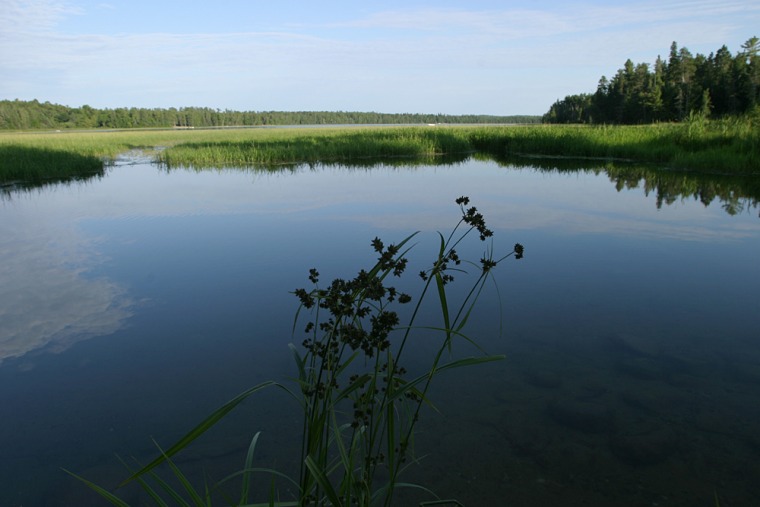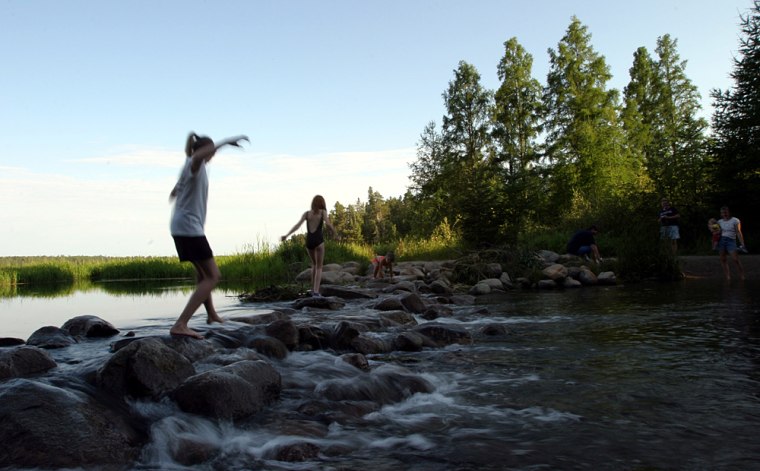Just as some drivers are loath to stop and ask directions, explorers who spent decades trying to pinpoint the source of the Mississippi River could have saved themselves a lot of grief by checking with the locals — the native Americans who lived near what is now known as Lake Itasca in northern Minnesota. We don’t intend to make the same mistake as we head the other way and begin our journey down the mighty river.
Finding the source of a river sounds like it should be easy: You follow it until you find a high-altitude body of water from which it emanates. But tracking down the headwaters of the Mississippi proved a daunting challenge for the early non-native explorers who ventured into the backwoods of Minnesota.
Part of the problem is that there isn’t a lot of elevation change in the headwaters region, according to Connie Cox, a naturalist at the Itasca State Park.
“(The river) starts in a region where there’s a lot of glacial sand hills … and the subtle changes in topography often confused these early explorers,” she said.

Their confusion was compounded by a reluctance to consult with the Indians, many of whom knew where the river originated, she said.
“The explorers were not familiar with the region and a lot of their early maps were very poorly drawn. And oftentimes they did not have good guides or interpreters with them to help show the way,” Cox said.
Among those frustrated by the topography, not to mention the wicked winter weather that the region is known for, was the explorer Lt. Zebulon Pike, who declared in 1806 that Leech Lake, about 25 miles to the east of Lake Itasca, was “the main source of the Mississippi.”
It took another 26 years until Henry Rowe Schoolcraft, an Indian agent who had the foresight to sign on an Ojibwa guide by the name of Ozawindib, identified Lake Itasca as the true headwaters of the river. He also gave the lake that the Ojibwa called Elk Lake a new name, melding the Latin words for “true” (veritas) and “head” (caput).
That would have been the end of the debate if it hadn’t been for Capt. Willard Glazier, a former Army officer turned adventurer who in 1881 visited the area and then published a book arguing that Schoolcraft had gotten it wrong. He claimed a higher lake that drained into Lake Itasca deserved the honor — immodestly naming it Lake Glazier.
Glazier’s claims set off a raging academic debate that was resolved only when Jacob Brower, who later was instrumental in creating Minnesota’s first state park at Lake Itasca, led a party to the area and mapped it in 1888, declaring that Lake Itasca was indeed the font of America’s mighty river.

Glazier, who was later found to have plagiarized portions of his book from Schoolcraft’s journals, not only had his reputation bruised. Lake Glazier’s name was unceremoniously changed to Elk Lake.
Rather than run the risk of making a similar blunder — like possibly starting our journey down the Mississippi from the wrong lake — we have arranged for local outfitter Terry Larsen to get us pointed in the right direction when we head down the river. As the Lake Itasca story clearly illustrates, a good guide is worth his weight in gold.
Reporter and media producer Jim Seida are traveling the full length of the Mississippi in August and will be filing daily dispatches along the way. If you have a question or comment, mail us at mississippi@msnbc.com.
